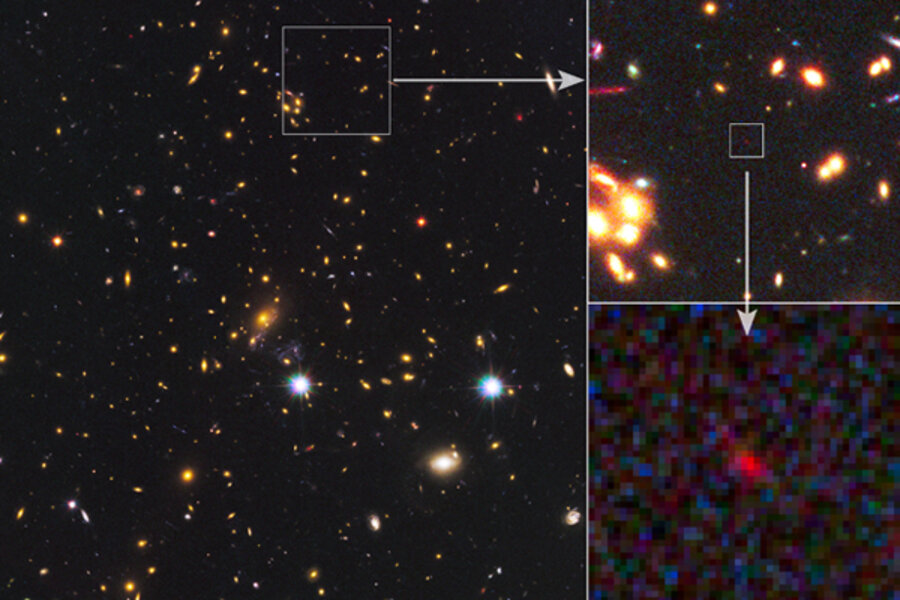Primordial galaxy spotted, sheds light on early universe
Loading...
| LOS ANGELES
The Hubble Space Telescope has detected light from a small galaxy emitted just 500 million years after the big bang, a crucial and difficult-to-study era when the universe was very young, scientists reported Wednesday.
Scientists were able to see the ancient galaxy because gravity from a massive galaxy cluster situated between it and Hubble acted as a lens, bending the light from the “incredibly faint” galaxy and magnifying it about 15 times, said Johns Hopkins astronomer Wei Zheng.
“The magnification was key,” said Zheng, a co-author of the study published in the journal Nature.
Zheng discovered MACS 1149-JD in November while working on a project to find distant — and thus dim —galaxies using the boost from such gravitational lenses. He and fellow members of the Cluster Lensing and Supernova survey with Hubble, or CLASH, team spent several months “convincing ourselves it was a real case,” he said.
Key to the analysis was determining the object’s redshift, or how much its wavelengths of light had been stretched out as the expansion of the universe pulled it away from Earth. The farther away a galaxy is, the more its light is shifted toward the infrared end of the spectrum.
MACS 1149-JD appeared to have a redshift of 9.6, suggesting its light began the journey toward Hubble about 13.1 billion years ago, when the universe was a mere 500 million years old, Zheng said.
Last year, astronomers used Hubble to find another galaxy at a redshift of about 10, suggesting it was formed 480 million years after the big bang. But the help from gravity’s magnifying glass allowed the CLASH team to learn more detail about MACS 1149-JD, Zheng said.
The team was able to use NASA’s Spitzer Space Telescope, for example, to estimate the galaxy’s likely mass (less than 1 percent that of the Milky Way) and basic shape (very compact, compared with similar galaxiesobserved later in the universe’s 13.7 billion-year history).
“It’s a beautiful result,” said Caltech astronomer Richard Ellis, who was not involved in the research. “It heralds that there are more of these out there.”
Astronomers are excited by the prospect of finding more galaxies like MACS 1149-JD because they could help reveal the early history of the universe, said Avi Loeb, an astronomer at Harvard University who was not on the research team.
Scientists know from studying the cosmic microwave background radiation that 400,000 years after the big bang, the universe was a relatively uniform cloud of matter. Over the next billion years, numerous maturegalaxies had formed.
Theorists such as Loeb believe that ultraviolet rays generated as the first stars and galaxies, formed roughly 100 million years after the big bang, broke down the leftover hydrogen atoms into electrons and protons. This process is called reionization.
But astronomers are searching for images of early galaxies from that period to confirm what actually happened, Loeb said.
“It’s like having an ultrasound picture of a baby and photos of a person as an adult,” he said. “We want to understand what happens in between.”
Zheng and his co-authors estimated that MACS 1149-JD had already been in existence as long as 200 million years, which suggests that its earliest stars were probably born before the universe was 300 million years old.
He said newer telescopes, including NASA’s forthcoming James Webb Space Telescope, should help astronomers see even further back in time, and in better detail.







